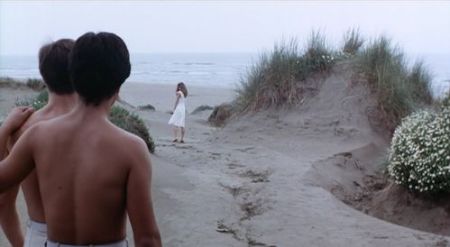Mr. Frost (1990)
/Being Film #12 in Hail Horror 4. Thanks to Jason (formerly of Your Theory is Crazy) for the recommendation.
Back when I was a broke post-college graduate living in downtown Albany, I engaged in a film education event with my friend Jason, said "event" being nothing more than introducing films the other hadn't seen but that, in our infinite 20-something year old wisdom, deemed excellent. For the life of me I can't recall what film I might have recommended (probably something old...Jason, if you're reading this and remember I'd love to know), but I distinctly recall the two films Jason recommended to me: RAPA NUI, the Easter Island romantic adventure, and MR. FROST, a film whose concept seemed right up my alley but which, alas, was no longer in print. We watched RAPA NUI (decent) and never got to MR. FROST.
Fast-forward 12-13 years, and thanks to the power of Netflix's Watch Now, my fervent dreams of finally seeing MR. FROST were about to come true.
Jeff Goldblum plays the title character, a quirky gentleman living on some palatial estate (the movie, a joint France/UK production, never establishes a location; at times it looks like France, England, and inexplicably in one scene Brooklyn) when he's visited by Detective Detweiler (played by Alan Bates), there to question him about a story - two car thieves broke into his house only to run away when they discover a dead body in the vehicle. Far from protesting, Mr. Frost divulges that not only was there a body in the car, but he was just in the process of burying it next to over a dozen other victims when the detective started up the driveway. Off to the nut house Mr. Frost willingly goes, where he refuses to speak for two years.
Cut to the present, and he's shipped to a new hospital where he meets Doctor Day, the sexy (in a 1990 kinda way) female psychiatrist played by Kathy Baker. It's only to Day that Mr. Frost will speak, and he confides to her that he is, in fact, the Devil - Old Scratch himself. Seems the Devil pines for the days where the battle between Good and Evil was a little more clear-cut before the advent of science and psychology, and he's here now to prove that the rational beliefs of the modern world can't override the ancient aethetic of Pure, 100% Grade-A Evil, and he'll prove it - by forcing her to murder him.
On paper it sounds really cool - a great tug-of-war on the nature of Good vs. Evil, Science vs. Faith...something like a metaphysical David Mamet film. In fact, how cool would this have played out if written/directed by Mamet, and starring his HOUSE OF GAMES alums Joe Mantegna and Lindsay Crouse? Alas, despite my enjoyment of all things Goldblum, MR. FROST plays a lot like a Lifetime Movie of the Week. There are a few creepy moments: Frost holds a weird power over portions of the hospital's inhabitants, including members of the staff, and they follow him with a wordless devotion that's genuinely unsettling. There's also a quick dream sequence where Goldblum does a bait-and-switch that's a lot of fun.
But all too often we get really bad lighting (in some places the film's so dark you can't make heads or tails of what's going on), bad transitions, and a few unintentionally funny scenes. Alan Bates is kind of wasted as the disgraced detective looking to end Frost's terror, and I can't help but think of Kathy Baker as a television actress, even when she's delightful in films like EDWARD SCISSORHANDS. In the end I think this is a case of something my 18-year old self would have loved just for the subject matter, but the 36-year old has found this subject matter handled much better elsewhere by now.
NOTE: I'm serious about the Goldblum thing: immediately after this film he did VIBES with Peter Falk and Cyndi Lauper, EARTH GIRLS ARE EASY with future wife (at the time) Genna Davis, and the sublime THE TALL GUY - all films I have no problem saying I enjoyed. And does anyone remember that weird cop show RAINES he did a year or so ago? Man I liked that...
2ND NOTE: Weird coincidence? I was searching through the old Interwebs, and it turns out Starz is using Mister Frost in their Instant Viewing advertising. Check it out:














